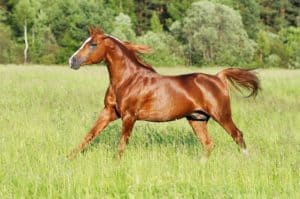WNV in Kentucky Horses: Second Case of 2018 Confirmed

A 6-year-old Tennessee Walking Horse stallion from Lewis County, Kentucky, tested positive for West Nile virus (WNV) on Aug. 31. This is the second confirmed case of WNV in Kentucky horses for 2018.
In a statement E.S. Rusty Ford, equine operations consultant for the Kentucky State Veterinarian’s Office, said the stallion developed clinical signs the morning of Aug. 28, when he was found down in his stall, but was able to rise with assistance.
That night, the horse went back down and became unable to rise, Ford said. He was euthanized on Aug. 29
Create a free account with TheHorse.com to view this content.
TheHorse.com is home to thousands of free articles about horse health care. In order to access some of our exclusive free content, you must be signed into TheHorse.com.
Start your free account today!
Already have an account?
and continue reading.

Written by:
Erica Larson
Related Articles
Stay on top of the most recent Horse Health news with












